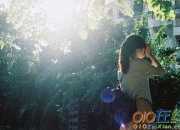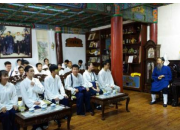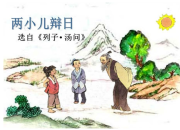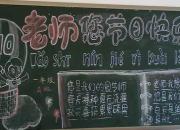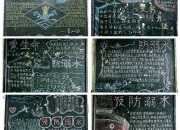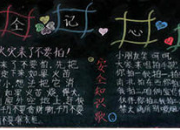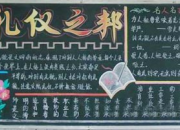三孔中英文导游词
时间:2021-08-31三孔中英文导游词
导语:山东曲阜孔府、孔庙、孔林,统称曲阜“三孔”,是中国历代纪念孔子,推崇儒学表征,以丰厚文化积淀、悠久历史、宏大规模、丰富文物珍藏,以及科学艺术价值而著称。以下是小编整理三孔中英文导游词资料,欢迎阅读参考。
英文版
As is known to all, Confucius is the first of the world's top ten famous people and is called a saint. He is a great thinker and educator in Chinese history and the founder of Confucian culture. Today, I came to qufu, the sage's hometown.
We first visited the Confucius temple. The Confucius temple is one of the famous "three holes". Confucius temple is a temple to worship Confucius. The largest Confucius temple in the world, magnificent and magnificent, with the Beijing Palace Museum, chengde summer resort and the three ancient Chinese architecture groups. In 1994, along with kong fu and konglin, they were listed on the world cultural heritage list. It covers an area of more than 200 mu and is located at the gate of qufu. I was deeply impressed by the ancient glazed tile house, magnificent and magnificent. It is said that the Confucius temple was originally the former residence of Confucius. The second year after the death of Confucius, the former residence was transformed into a temple, and the temple of Confucius still holds the Wells that Confucius used to use and the cypress trees planted by his own hands.
Entering the temple, we first see the hongdao gate. It is the large and medium-sized gate that goes on. A guide told us that the large and medium-sized gate was praising Confucius for his thought not to be crooked, not to go up, to be in the middle of the meaning.
After a long walk, we entered the kuiwen pavilion, a strange cypress tree that lit up my eyes. The bark of the cypress trees zigzagged as if it were floating in waves. Legend has it that the emperor qianlong was tired when he came to worship the temple of Confucius, and he rested on the cypress tree for a moment. The cypress tree touched the emperor's dragon, the tree became a dragon, this tree is known as the cypress. In response to this, the edge of a tree is like a canopy of cypress trees, but it has been destroyed by thunder fire.
The main building of Confucius temple is dacheng hall. The resplendent and magnificent basilica positive ten pillar, most notably two dragon carved on each post, fit in the clouds, in the whole piece of stone carving, carving exquisite, powerful, art of using saber is bold is qufu unique stone carving art treasures, it is said that the qing emperor qianlong to sacrifice to Confucius qufu, columns with red twill, dare not seen by the emperor, the emperor will be blamed for more than the palace, I'm afraid.
The most magnificent in the temple is the almond altar. The almond altar is located in front of the great hall of Confucius. In jin dynasty, people built pavilions on the almond altar. Fang ting heavy eaves, yellow zhu daozhu, under the pavilion and the "xingtan" and qianlong's "almond altar". On the almond altar today, there is no reading aloud, but the sacred smell still lingers in the Confucian temple.
中文版
女士们、先生们:曲阜是我国古代伟大思想家、政治家、教育家孔子故乡,全国首批公布24个历史文化名城之一。孔子有句名言:“有朋自远方来,不亦乐乎。”今天,我有幸为各位担任导游,十分高兴。我将尽力为大家提供满意服务,不足之处,请批评指正。
曲阜概况 在参观“三孔”之前,请允许我把曲阜概况介绍一下:
曲阜地处鲁中山区和鲁西南平原交界处,北依泰山,南引峄山,东连沂蒙群山,西俯千畴平原。地势东高西低,境内泗河、沂河等河流均自东向西流淌,自古就有“圣人门前倒流水”之说。物产丰富,景色宜人。大诗人李白曾描写曲阜:“笑夸故人指绝境,山光水色青如兰”。
曲阜历史悠久,早在五六千年前,我们祖先就在这里繁衍生息,创造了人类早期文明。不少古籍中,还有炎帝、少吴徙都于曲阜,黄帝生于寿丘(曲阜城东8里 处),舜于寿丘作什器记载。可见,中国远古时代最有影响三皇五帝中就有四人在曲阜留下了踪迹。尽管这是传说,但也并不是毫无根据。从境内保存下来20余处大汶口文化和龙山文化遗址中仍可见到我们祖先征服自然遗迹。 “曲阜”一名最早见于《礼记》。东汉应劭解释说:“鲁城东有阜,委曲长七八里,故名曲阜。”商代前期,曲阜名奄,是商王朝重要属国。周代自“封周公于曲阜”800余年,曲阜为鲁国都城,是当时我国一个重要政治、经济、文化中心。春秋时期,孔子首创私人讲学之风,“弟子三千,贤者七十有二”遍及全国各地,又成了当时教育中心。鲁国是曲阜历史上黄金时期,以“礼仪之邦”著称于世,故山东省现仍沿用“鲁”作为简称。公元前 249年,楚灭鲁,置鲁县,秦代属薛郡,西汉时为鲁国都,魏晋南北朝时为鲁郡治。隋开皇十六年(596年),首定曲阜为县名。宋代改称仙源县,金代恢复曲阜县名至今。1986年撤县制,始称曲阜市。现面积为890平方公里,人口60余万。 悠久历史,灿烂文化,给曲阜留下了大量文物古迹,主要有110余处,其中孔庙、孔府、孔林及鲁国故城遗址被列为全国首批公布重点文物保护单位,另有11处列为全省重要文物保护单位。“三孔”还于1994年被联合国列为世界文化遗产。
新中国建立后,特别是党十一届三中全会以来,党和对曲阜文物古迹十分关注,国家先后拨款3000多万元对“三孔”进行了全面修茸。近年来,为了大力发展旅游事业,曲阜又相继开发建设了孔子六艺城、论语碑苑、鲁国盛世华夏文化城等一批新旅游景点,形成人文与自然景观,新老景点浑然一体,相映生辉旅游资源新格局,成为中外游人向往文化旅游胜地。
孔庙
现在我们参观孔庙。孔庙位于曲阜城中心,是我国古代封建王朝祭祀孔子地方。
孔 子(公元前551--公元前479年)名丘,字仲尼,诞生于曲阜尼山。春秋末期,他在鲁都阙里聚徒讲学,传授“六世”(礼、乐、射、御、书、数),并在实践中总结出一套行之有效理论。晚年,他删《诗》、《书》,订《礼》、《乐》,赞《周易》,修《春秋》,为传播文化做出了巨大贡献:他“祖述尧舜,文武”,集三代文化之大成,创立了“重仁尚礼”儒家学说,把中国古代文化推向了一个新高峰。孔子死后第二年,鲁哀公将其生前所居之堂立为庙,“岁时奉祀”。当时只有“庙屋三间”,内藏孔子生前所用衣、冠、琴、车、书等。其后,随着历代王朝层层加谥孔子,孔庙不断得到维修扩建,至明、清时期形成了现在规模。前后九进院落,占地327.5亩,南北长达1公里;共有建筑466间,54座门坊;加之 庙内1700余株古树,1200余块碑碣,令人一步三叹。孔庙与北京故宫、河北承德避暑山庄并称为中国三大古建筑群,是我国古代劳动人民智慧结晶。二千多年来,游人竞相寻踪凭吊,流连往返。

